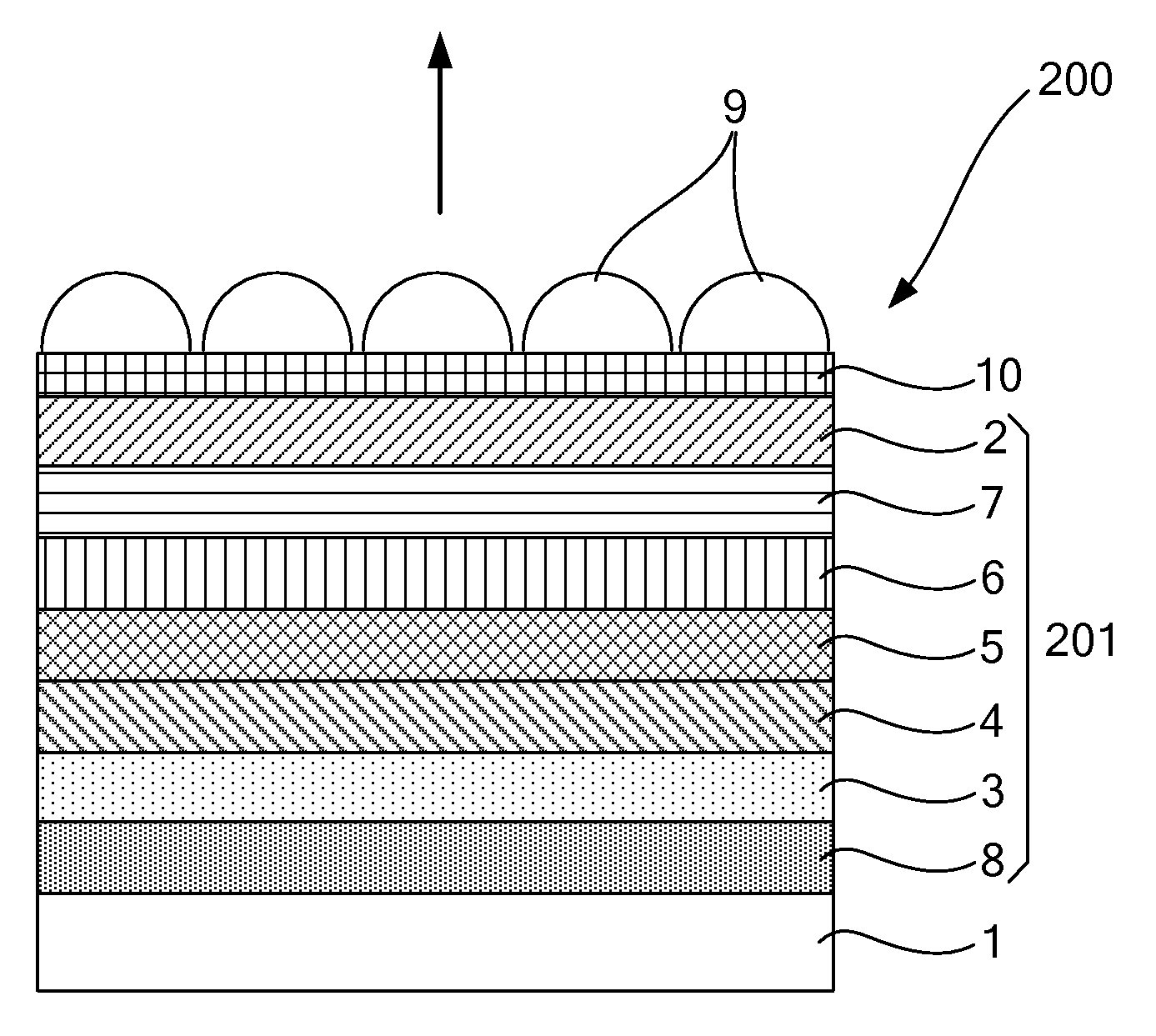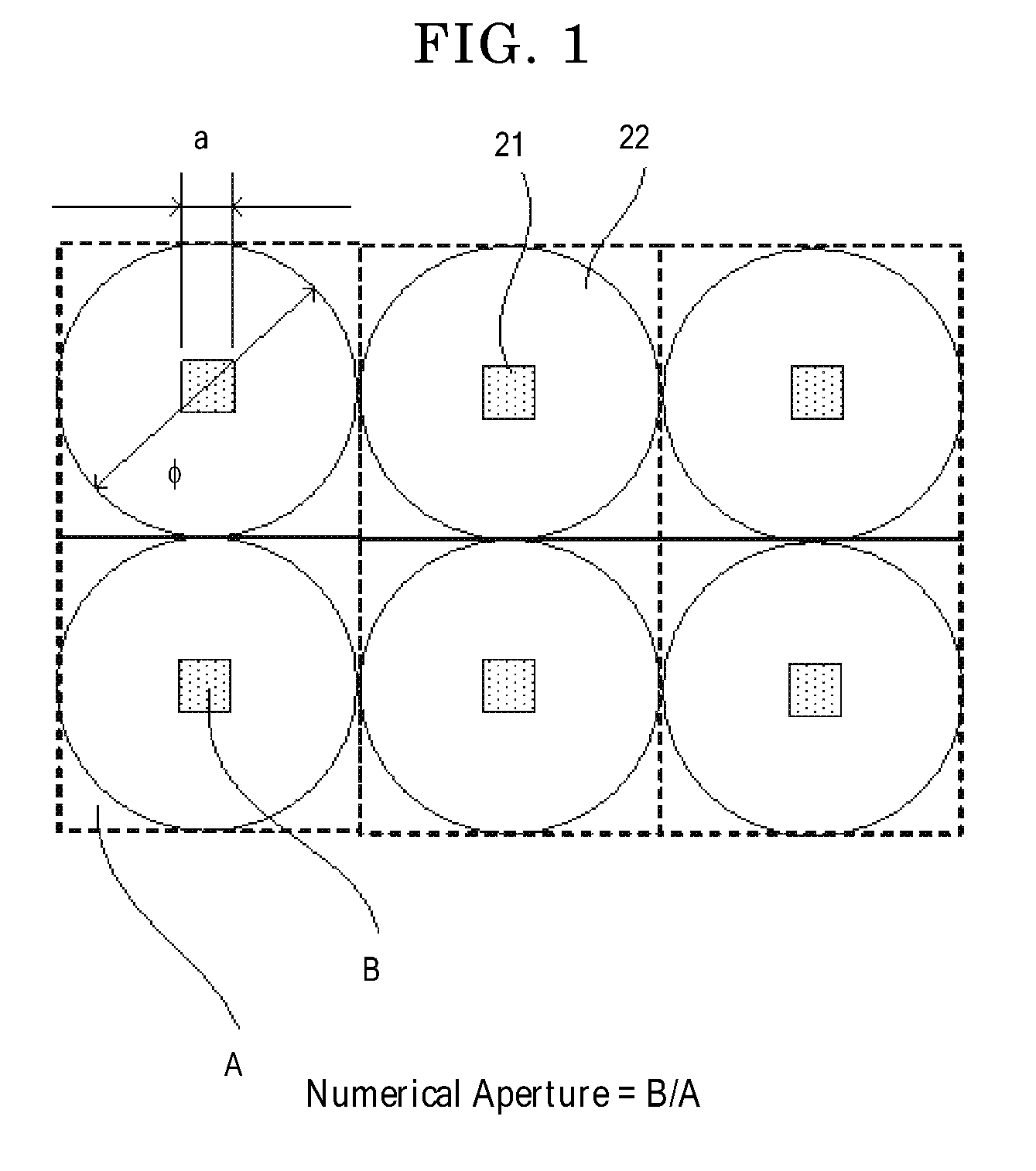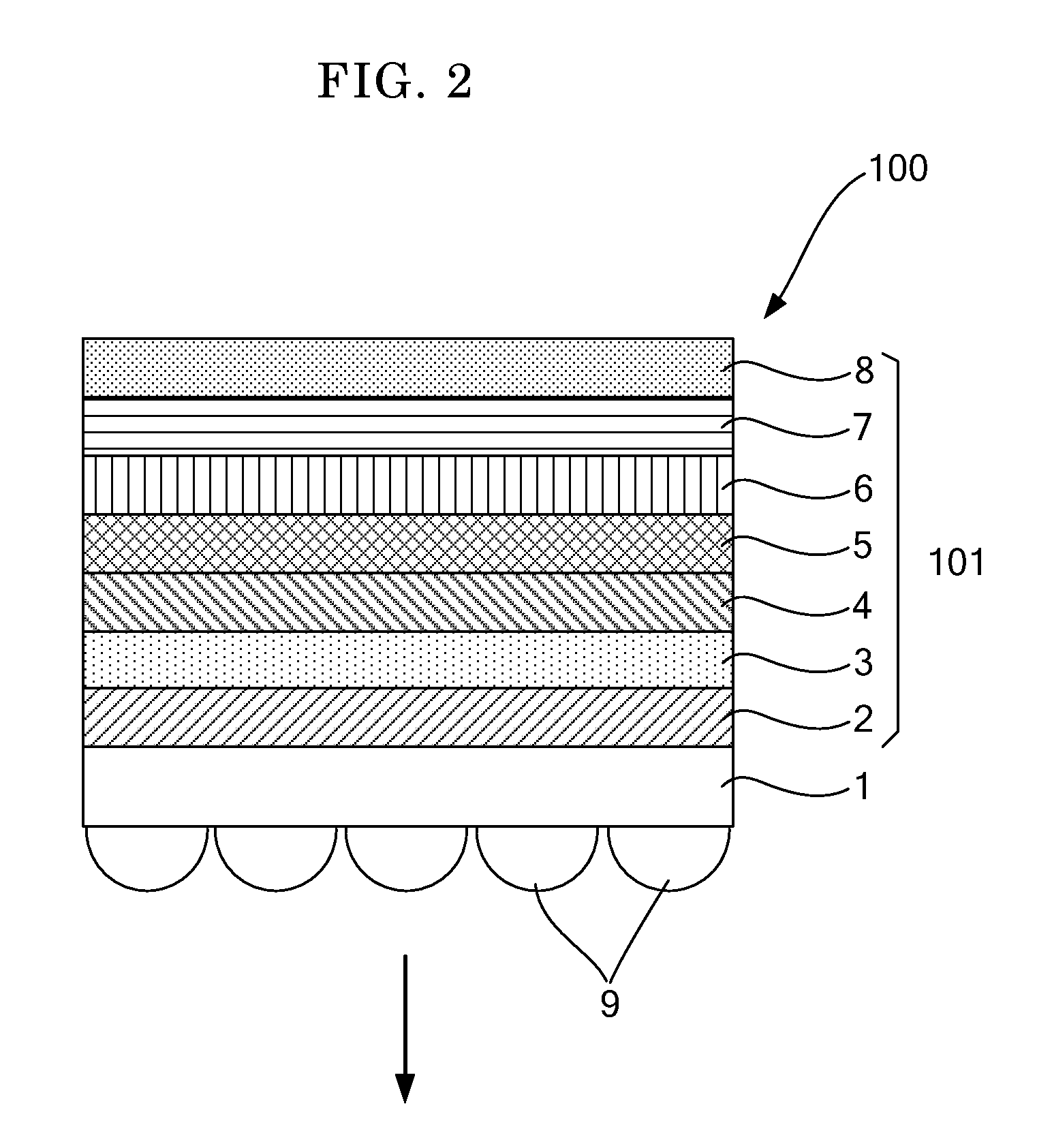Organic el device and design method thereof
a technology of organic el and device, applied in the direction of semiconductor devices, basic electric elements, electrical apparatus, etc., can solve the problems of low light-extraction efficiency, low light-extraction efficiency of devices, and loss of most emitted light, so as to achieve low drive voltage, no image blur, and high light-extraction efficiency
- Summary
- Abstract
- Description
- Claims
- Application Information
AI Technical Summary
Benefits of technology
Problems solved by technology
Method used
Image
Examples
first embodiment
[0089]In a first embodiment, an organic EL display part has a first order microcavity structure whose optical length L(λ) is 1λ, (where λ denotes a wavelength of emitted light). The structure may be of a bottom-emission or top-emission type.
[0090]In this first embodiment, preferably, the ratio of A to B (AM) is greater than 1 and the ratio of φ to a (φ / a) is 1.2 or greater, where A denotes a light-extraction efficiency in terms of front brightness when the lens is placed on the light-extraction surface, B denotes a light-extraction efficiency in terms of front brightness when the lens is not placed on the light-extraction surface, φ denotes an effective diameter of the lens, and a denotes the maximum length of a side of the light-emitting layer. The ratio (φ / a) is more preferably 1.6 or greater, still more preferably 2.5 or greater. The upper limit of the ratio (φ / a) is preferably 4.47.
[0091]Also, preferably, the ratio of C to D (C / D) is greater than 1 and the ratio of φ to a (φ / a) ...
second embodiment
[0092]In a second embodiment, an organic EL display part has a second order microcavity structure whose optical length L(λ) is 2λ, (where λ denotes a wavelength of emitted light). The structure may be of a bottom-emission or top-emission type.
[0093]In this second embodiment, preferably, the ratio of A to B (A / B) is greater than 1 and the ratio of φ to a (φ / a) is 1.4 or greater, where A denotes a light-extraction efficiency in terms of front brightness when the lens is placed on the light-extraction surface, B denotes a light-extraction efficiency in terms of front brightness when the lens is not placed on the light-extraction surface, φ denotes an effective diameter of the lens, and a denotes the maximum length of a side of the light-emitting layer. The ratio (φ / a) is more preferably 1.8 or greater, still more preferably 2.5 or greater. The upper limit of the ratio (φ / a) is preferably 4.47.
[0094]Also, preferably, the ratio of C to D (C / D) is greater than 1 and the ratio of φ to a (φ...
third embodiment
[0095]In a third embodiment, an organic EL display part has a third order microcavity structure whose optical length L(λ) is 3λ (where λ denotes a wavelength of emitted light). The structure may be of a bottom-emission or top-emission type.
[0096]In this third embodiment, preferably, the ratio of A to B (A / B) is greater than 1 and the ratio of φ to a (φ / a) is 1.5 or greater, where A denotes a light-extraction efficiency in terms of front brightness when the lens is placed on the light-extraction surface, B denotes a light-extraction efficiency in terms of front brightness when the lens is not placed on the light-extraction surface, φ denotes an effective diameter of the lens, and a denotes the maximum length of a side of the light-emitting layer. The ratio (φ / a) is more preferably 2.0 or greater, still more preferably 2.5 or greater. The upper limit of the ratio (φ / a) is preferably 4.47.
[0097]Also, preferably, the ratio of C to D (C / D) is greater than 1 and the ratio of φ to a (φ / a) ...
PUM
 Login to View More
Login to View More Abstract
Description
Claims
Application Information
 Login to View More
Login to View More - R&D
- Intellectual Property
- Life Sciences
- Materials
- Tech Scout
- Unparalleled Data Quality
- Higher Quality Content
- 60% Fewer Hallucinations
Browse by: Latest US Patents, China's latest patents, Technical Efficacy Thesaurus, Application Domain, Technology Topic, Popular Technical Reports.
© 2025 PatSnap. All rights reserved.Legal|Privacy policy|Modern Slavery Act Transparency Statement|Sitemap|About US| Contact US: help@patsnap.com



